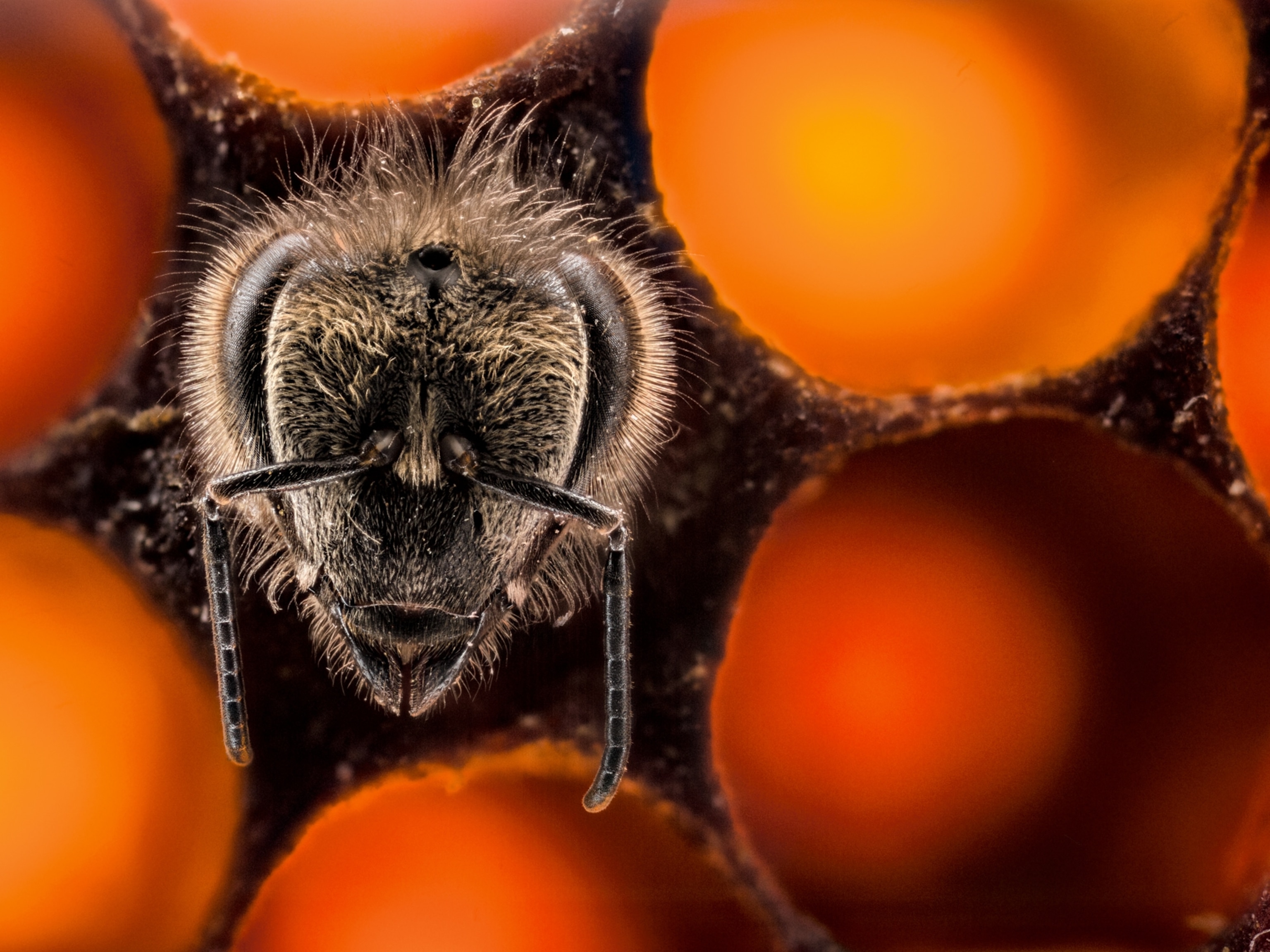
Bumblebee Buzz Literally Makes Flowers Explode With Pollen
The fuzzy pollinators vibrate in the key of the Beatles song "Hey Jude" to make flowers give up their goods.
Like many people, reader Todd Barczak is increasingly interested in where his food comes from. So he came to us with this question: "Are honeybees the only bees that make honey?"
Weird Animal Question of the Week buzzed off to find out.
Hoarding the Gold
Of the estimated 20,000 species of bees worldwide, only a few hundred species make honey, and only honey bees make a surfeit of the sweet stuff says Juliana Rangel, entomologist at Texas A&M University.
There are seven species of honeybees, which include Asian, African, and European honeybees, the latter of which we mostly see in the U.S. (Related: "Obama Unveils Plan to Reverse Alarming Decline of Honeybees.")
Honeybees make extra because "they live in places where there are seasons," Rangel says, storing and living on honey in winter when there’s no nectar to eat.
What Is Honey, Anyway?
Bee barf.
So says Denise Ellsworth, an entomologist at Ohio State University who describes how bees suck nectar from plants, which then goes into a "honey stomach," an organ for storing food before it's digested.
The nectar mixes with an enzyme, and "the bees regurgitate that when they get back to the colony," condensing the nectar into honey. (Read more about the decline of the honeybee.)
Plan B
Pollen easily gets stuck to bees' fuzzy bodies and carried from flower to flower, Ellsworth says, but bumblebees and some other wild bees do something honeybees don’t do: buzz pollination. (Related: "First Bumblebee Declared Endangered in the U.S.")
Bumblebees "can unhinge their wings from their wing muscles and vibrate their bodies," Ellsworth says, making that buzzing sound you hear when they’re on a flower in the tone of middle C.
"It’s the 'hey' in 'Hey Jude,' and it causes the flower to explosively release pollen."
To pollinate some plants, such as blueberries and cranberries, bees "wrap their legs around the flower" and buzz that note, causing release of pollen "like salt from a shaker," Ellsworth says.
That’s a level of intimacy you’ll think about over your next blueberry smoothie.
Beeing Positive
But bees aren’t just persuasive. They’re energy efficient.
"Bees have a positive electrostatic charge to their bodies," says Ellsworth, "like when you scrape your feet across a carpet."
Flowers have a negative charge, so before a bee lands on one, it uses its body hairs to feel the strength of a flower's charge. A flower that has just been visited by another pollinator "loses a little bit of that negative charge," allowing the would-be pollinator to save time and move on.
A Bouquet of Flowers
All this work provides a whopping portion of what we eat: Honeybees, along with native pollinators like butterflies, pollinate a third of the food consumed worldwide, says Rangel.
Pollinators' global value is estimated at $200 billion per year; in the U.S., it's about $15 billion annually.
For all the delicious fruits and crops they give us, honeybees themselves have few genes for taste. But the insects do seek out nutrients such as salt, according to a recent study in the journal Ecological Entomology.
In autumn, when there are fewer plants available, bees visit puddles, bird baths, and compost piles to satisfy their nutrient needs, lead author Rachael Bonoan, a Tufts doctoral candidate, says by email. (Related: "For the First Time Bees Declared Endangered in the U.S.")
Little is known about minerals content in pollen and nectar, except that they contain "trace amounts," says Bonoan.
Therefore it’s important that bees have a variety of flowers, "so they have the best chance of finding what they need."
Here's how you can do your part to help pollinators in your own backyard.
Have a question about the weird and wild world? Tweet me, leave me a note in the comments, or find me on Facebook. Weird Animal Question of the Week answers your questions every Saturday.





